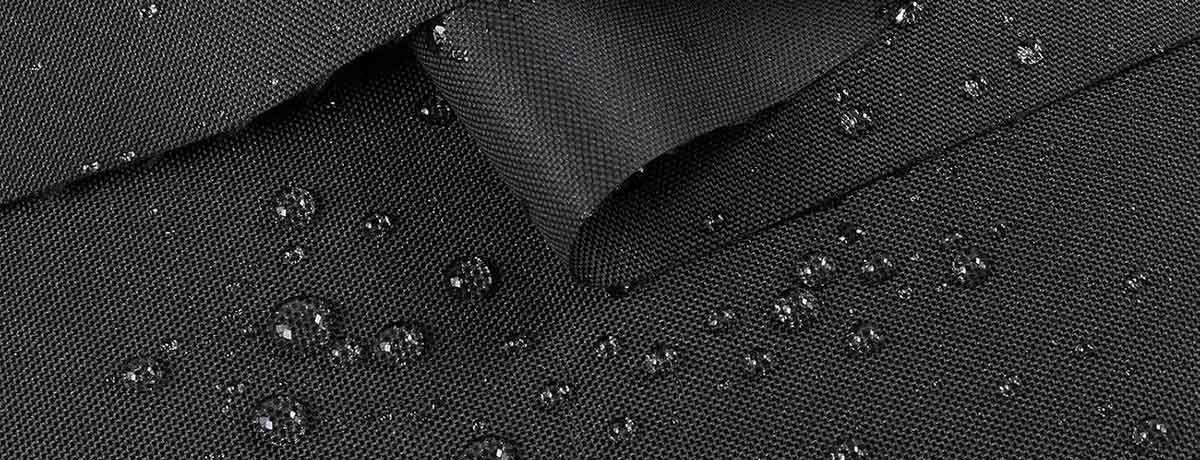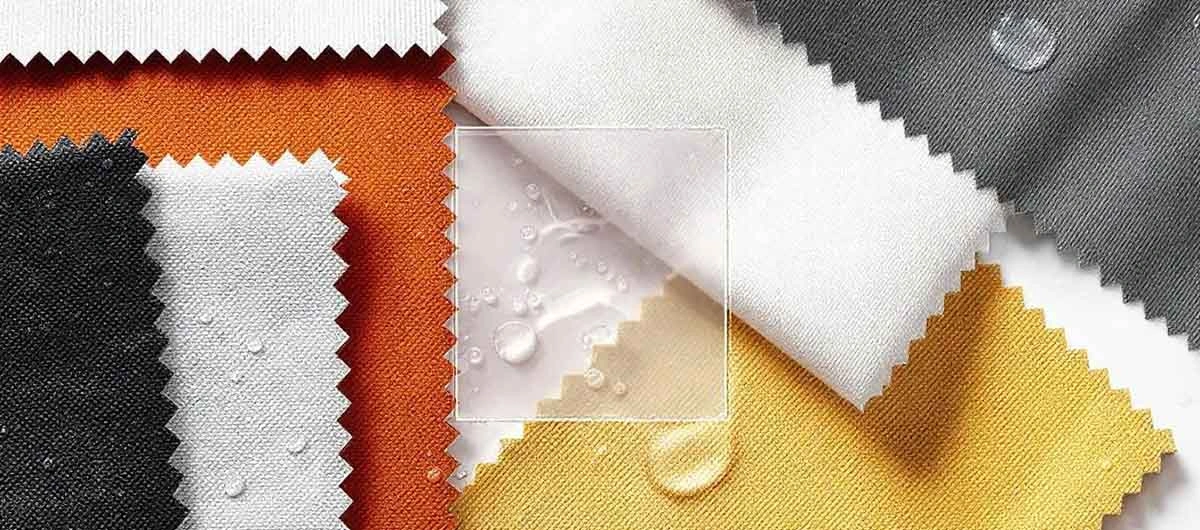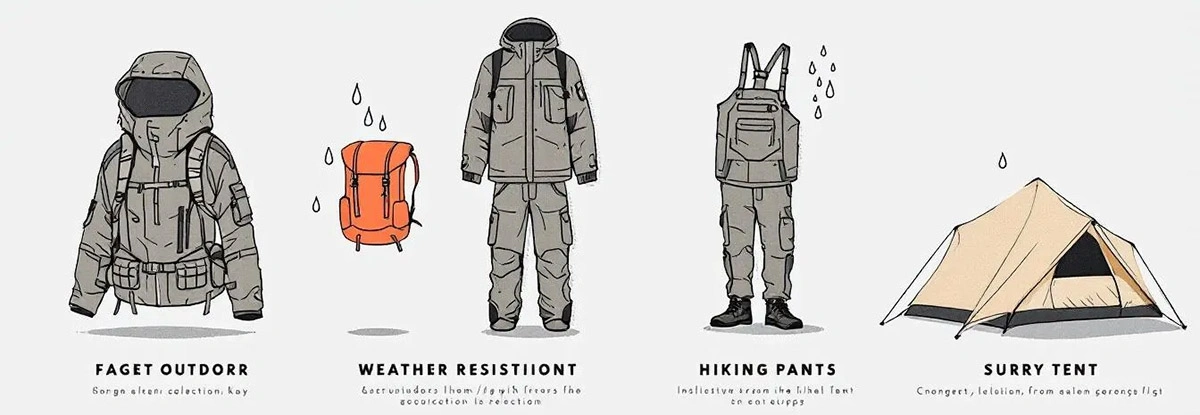Is Cordura Waterproof or Just Water-Resistant?

Is Cordura waterproof? If you’re wondering how well Cordura fabric can resist water, the short answer is no, it is not fully waterproof. However, Cordura is highly water-resistant, thanks to its tight weave and various coatings that enhance its ability to repel water. This distinction will help you understand how this durable material performs in wet conditions. Read on to learn about the factors affecting Cordura’s water resistance and how you can enhance its protection against the elements.
Key Takeaways
-
Cordura fabric offers significant water resistance due to its tightly woven nylon structure, with variations in weave density and coatings impacting its effectiveness.
-
Cordura is not fully waterproof; while it can resist water exposure effectively, prolonged submersion may lead to water seepage, highlighting the distinction between water-resistant and waterproof fabrics.
-
Proper maintenance, including applying waterproofing treatments and using appropriate cleaning methods, is essential to preserve Cordura’s durability and water repellency.
Understanding Cordura's Water Resistance
Cordura fabric is a marvel of textile engineering, designed to withstand the rigors of various demanding environments. One of its standout features is its resistance to water and wind, thanks to its tightly woven nylon construction. But what exactly makes Cordura so adept at keeping water at bay?
Several factors come into play, including weave density, fabric type, and additional treatments. These elements collectively contribute to the fabric’s water repellency, making it an ideal choice for those who need a breathable high-performance fabric that won’t let them down when the weather turns rough.
Understanding the specifics of these factors and how different coatings enhance water resistance can provide more clarity.
Factors Affecting Water Resistance
The water resistance of Cordura fabric is influenced by several critical factors. First and foremost is the weave density. Thicker fabrics, such as the 600D Cordura, offer enhanced water resistance due to their denser weave, which reduces the likelihood of water penetration. Additionally, the type of fabric and the treatments applied play significant roles. Certain Cordura fabrics utilize a water-repellent coating, significantly boosting their ability to resist water.
Regular maintenance and care are crucial. Over time, the effectiveness of the water-repellent coating can diminish, so it’s important to maintain and restore the water resistance through proper care and treatments. When these factors are combined, they create a fabric that is not only wear-resistant but also highly effective in keeping water out.
Comparing Water Resistance of Different Coatings
Different coatings such as PU, PVC, and TPU each offer unique advantages that make them suitable for specific applications. These coatings significantly enhance the water resistance of Cordura by creating a barrier against moisture. For instance, PU (polyurethane) coatings provide a flexible and lightweight water-resistant layer, making them ideal for backpacks and apparel.
PVC (polyvinyl chloride) coatings, on the other hand, offer 100% waterproof protection and are thick and durable, suitable for applications like luggage or military gear. The choice of coating can greatly influence the waterproofing capabilities of Cordura. While some coatings may provide full waterproof protection, others enhance water resistance to a high degree but are not fully waterproof.
Recognizing these differences helps in selecting the appropriate type of Cordura fabric for specific needs, ensuring optimal performance in various conditions.
How Waterproof is Cordura?

While Cordura is celebrated for its high water resistance, it is not fully waterproof. Extended submersion in water might eventually allow water to seep through the fabric. In most practical applications, Cordura can endure water exposure for a considerable duration without leaking, making it highly reliable for outdoor gear and equipment.
Customer reviews on Cordura’s water resistance vary, with some users claiming it to be fully waterproof while others note its limitations. This discrepancy often depends on the specific type of Cordura and the coatings applied. For instance, 600D Cordura, which comes with a waterproof coating, tends to perform better in terms of water resistance.
Water-Resistant vs. Waterproof
Distinguishing between water-resistant and waterproof fabrics is crucial. Water-resistant fabrics can withstand some moisture but may allow water penetration under certain conditions. The tight weave of nylon 6,6 fibers in Cordura contributes significantly to its water resistance, but it doesn’t render the fabric completely impervious to water.
Weave density, the type of Cordura, and additional treatments directly affect its waterproofness. Coatings such as PU and PVC offer varying levels of durability and flexibility, making them suitable for different applications.
This knowledge assists in choosing the right type of Cordura for specific needs, whether for rugged outdoor adventures or daily use.
Enhancing Cordura's Waterproofness
Enhancing Cordura’s waterproofness often involves applying additional coatings and treatments. Durable Water Repellent (DWR) coatings and lamination with waterproof membranes can significantly boost water resistance. These treatments add an extra layer of protection, enabling the fabric to withstand prolonged exposure to moisture.
Waxing Cordura can also enhance its water resistance. Applying fabric wax designed for outdoor gear and workwear increases water resistance and adds a lighter, unique appearance.
Such enhancements ensure Cordura remains a high-performance fabric suitable for various challenging conditions, including the world’s toughest environments requiring durable fabrics.
Characteristics of Cordura Fabric
Renowned for its exceptional strength and durability, Cordura fabric suits various rugged applications. Its unique blend of woven fibers contributes to its strength and resilience, allowing it to withstand extreme conditions and heavy use. Such characteristics make Cordura a preferred choice for high-performance applications requiring reliability and longevity.
Cordura’s versatility is reflected in its various textures, weights, and finishes. Whether for luggage, travel gear, performance apparel, or everyday items like backpacks and bag shoes, Cordura’s superior durability and lightweight properties make it an ideal choice.
The following explores its durability, abrasion resistance, and UV and mildew resistance.
Durability and Abrasion Resistance
Cordura’s durability is unmatched due to its high-tenacity fibers and unique weave pattern. Air-jet texturing of the yarns further enhances abrasion resistance, making it suitable for demanding heavy duty applications. Customer reviews often describe Cordura products as strong and sturdy, affirming their reputation in challenging environments.
Such durability characteristics make Cordura a favorite among industry leaders, reducing the need for frequent replacements and repairs. Whether for outdoor gear, military applications, or everyday items, Cordura’s proven performance in withstanding wear and tear makes it reliable.
UV and Mildew Resistance
Engineered to withstand prolonged UV exposure, Cordura fabric is ideal for outdoor environments. Its excellent UV resistance ensures durability and functionality even after long periods in direct sunlight. However, prolonged exposure to sunlight can lead to some color fading, especially in fabrics like 600D Cordura.
In addition to UV resistance, Cordura also exhibits good mildew resistance, suitable for humid and damp conditions. These characteristics are essential for maintaining the appearance and functionality of Cordura products over time.
Applications of Cordura Fabric

Cordura fabric’s versatility makes it suitable for a wide range of uses. From outdoor gear and military applications to everyday items, Cordura’s durability and resistance to environmental factors ensure reliability in various settings. Its adaptability across different uses solidifies its reputation as a versatile and high-performance fabric.
The following will explore Cordura’s use in outdoor gear and equipment, military and tactical gear, and everyday items, highlighting its benefits and specific applications.
Outdoor Gear and Equipment
Cordura fabric is a popular choice for outdoor gear and equipment due to its durability and resistance to abrasions, tears, and scuffs. Whether backpacks, tents, or outdoor furniture, Cordura’s ability to withstand rough use over long periods makes it ideal for challenging environments.
Standard choices for making backpacks and outdoor equipment include Cordura Classic 500D and 1000D, with the 1000D fabric adopted by the U.S. military for combat boots due to its high durability. These materials provide a good strength-to-weight ratio, suitable for various outdoor activities and applications.
Military and Tactical Gear
Cordura’s durability and flexibility make it excellent for military and tactical gear. Resistant to fading, mold, and mildew, Cordura ensures long-lasting performance in diverse environments. Certain Cordura fabrics are specifically designed to comply with military standards, ensuring they can withstand harsh conditions.
In military applications, Cordura is used in products like:
-
boots
-
backpacks
-
protective gear providing the necessary durability and protection in demanding settings. Its ability to block UV rays further enhances its protective capabilities.
Everyday Items
Cordura’s durability makes it popular for everyday items like school backpacks, footwear, and furniture upholstery. Its resistance to wear, tear, and fading ensures these items remain functional and aesthetically pleasing over time.
Cordura fabric’s versatility extends to DIY projects and home decoration, where its reliability and longevity are highly valued. Whether for practical use or creative endeavors, Cordura’s exceptional durability makes it ideal for a wide range of everyday applications.
Maintenance Tips for Cordura
Proper maintenance ensures the longevity of Cordura products. Proper care enhances the lifespan of Cordura items, maintaining their desirable properties and performance.
The following provides practical tips for cleaning and stain removal, as well as methods for preserving the water resistance of Cordura fabric.
Cleaning and Stain Removal
For general cleaning, use mild soap and warm water with a soft brush or cloth to gently clean the fabric. For stubborn stains, blot the area with isopropyl alcohol, and always air-dry the fabric after cleaning. Check the care label before machine washed Cordura items and avoid using bleach or harsh detergents.
When ironing Cordura, follow these guidelines:
-
Use a cool iron on a low heat setting.
-
Test on a hidden area first to avoid damaging the fibers.
-
Avoid excessive heat as it can damage the fibers.
-
Use heat guns or hair dryers with caution if necessary.
Preserving Water Resistance
Additional waterproofing treatments can significantly improve the water resistance of Cordura fabric. Durable Water Repellent (DWR) coatings and other treatments are essential for maintaining the fabric’s performance in wet conditions.
Cordura fabrics are preferred for outdoor equipment because they provide superior water repellency and are quick-drying, ensuring durability and functionality in various environments.
Customizing Cordura
Customizing Cordura fabric is possible through methods like dyeing and waxing. Such customizations not only enhance the fabric’s appearance but also improve its performance and durability.
The following explores the processes of dyeing and waxing Cordura, providing insights into how these methods can be applied effectively.
Dyeing Cordura
Dyeing Cordura fabric can result in vibrant, long-lasting colors, but requires specific techniques and materials. The dyeing process involves using heat and synthetic dyes formulated for nylon or polyester, depending on the type of Cordura. This ensures that the colors penetrate deeply into the fibers, providing a uniform and durable finish.
While dyeing can be complex, the results are often worth the effort. Whether customizing a backpack, jacket, or other Cordura item, dyeing opens up numerous possibilities for personalization and aesthetic enhancement.
Always follow the dye manufacturer’s instructions carefully to achieve the best results.
Waxing Cordura
Waxing Cordura is another effective method for customization and property enhancement. The process involves applying fabric wax to the Cordura item using a circular motion, then using heat to melt the wax into the fibers. This improves the fabric’s water resistance and gives it a unique texture and appearance.
The waxing technique can provide additional durability to the Cordura fabric, making it even more suitable for rugged outdoor use. Whether you’re preparing your gear for extreme conditions or simply want to give it a distinctive look, waxing is a practical and beneficial customization option.
Wholesale Order
If you’re in need of Cordura fabric in bulk, MH is a professional wholesale supplier specializing in durable and high-performance fabrics. With over 25 years of experience and a global reach, MH offers reliable quality assurance and factory-direct pricing for Cordura-type waterproof fabrics.
Whether for outdoor brand, uniform manufacturers, or DIY enthusiasts, MH provides custom waterproof coatings and colors to meet your specific needs.
Summary
In summary, Cordura fabric stands out for its exceptional durability, water resistance, and versatility. By understanding the factors that affect its water resistance and the various coatings available, you can make informed decisions about the best type of Cordura for your needs. Whether you’re looking for outdoor gear, military applications, or everyday items, Cordura’s proven performance ensures that your products will withstand the test of time.
Maintaining and customizing Cordura through proper cleaning, additional treatments, dyeing, and waxing can further enhance its properties and longevity. As a trusted material for a wide range of applications, Cordura continues to be a top choice for those who demand high performance and reliability from their fabrics. Consider integrating Cordura into your next project and experience the benefits of this remarkable fabric.
Frequently Asked Questions
Which fabric is 100% waterproof?
Oil cloth is a 100% waterproof fabric made from vinyl, making it a durable choice for various applications. Its shiny and thick texture, however, may limit its flexibility compared to other options.
Is Cordura fabric waterproof?
Cordura fabric is highly water-resistant but not fully waterproof; while it can endure exposure to water, prolonged submersion may result in water seepage.
How can I enhance the waterproofness of Cordura fabric?
To enhance the waterproofness of Cordura fabric, apply Durable Water Repellent (DWR) coatings or wax the fabric, which provides an additional layer of moisture protection. This will significantly improve its resistance to water.
What makes Cordura fabric so durable?
Cordura fabric's durability stems from its high-tenacity nylon fibers and distinct weave pattern, providing exceptional resistance to abrasions, tears, and scuffs. This robust construction makes it well-suited for demanding applications.
Can Cordura fabric be used for everyday items?
Yes, Cordura fabric can indeed be used for everyday items such as backpacks, footwear, and furniture upholstery, thanks to its exceptional durability and resistance to wear and tear.


